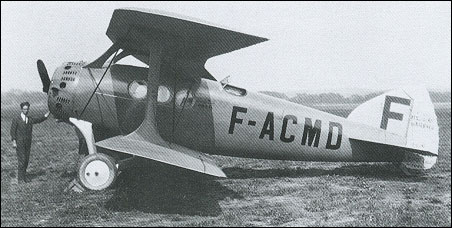 |
Bleriot-SPAD S.331920 |  |
| PASSENGER | Virtual Aircraft Museum / France / Bleriot |
 |
The prototype (F-CMAZ) of the Bleriot-SPAD S.33 first flew on 12 December 1920. This, and early production aircraft, were powered by a single 186kW Salmson radial, but later machines had a 194kW Salmson. Four passengers were accommodated in comfortable wicker armchairs in an enclosed forward cabin, and provided with a good view through three porthole windows on each side of the fuselage. Behind them in side-by-side open cockpits were the fifth passenger (to starboard) and the pilot. The S.33 was a great success, with 41 examples being built. Fifteen flew with the Messageries Aeriennes company, later incorporated in Air-Union; 20 were used on the routes between France and eastern Europe operated by the Compagnie Franco-Roumaine; and five were bought by the Belgian SNETA company, which was absorbed in the SABENA national airline in May 1923. S.33s became a familiar sight to passengers at most European commercial airports. In 1925 the Franco-Roumaine company re-formed as the famous CIDNA (Compagnie Internationale De Navigation Aerienne), with Maurice Nogues as chief pilot. CIDNA's routes, which linked Paris with many east European capitals, were extended to Constantinople (now Istanbul), and the backbone of these services was the S.33. In May 1926 the Air-Union company inaugurated a direct service from Paris to Marseilles, utilising five S.33s and one S.56-3. S.33 F-AICC was modified, by the incorporation of a larger wing and dual controls, for service as a blind-flying trainer for CIDNA pilots. The pupil pilot flew the aircraft from within the cabin, which had its windows blacked out! The S.33 and its developments dominated the field of smaller European transport aircraft right through the 1930s.
|  All the World's Rotorcraft | ||||||||||||||||||||||||||||||||||||||||||||||||||||||
 |

|
